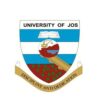
If you are looking for WAEC Syllabus for biology 2022/2023 PDF, your search ends here. This page will provide you with both PDF and Typed versions of the syllabus. It will also provide you with vital information required for the examination and the scope of study.
This examination syllabus is divided into three sections: Sections A, B and C. Section A is for all candidates, Section B is for candidates in Ghana only and Section C is for candidates in Nigeria, Sierra Leone The Gambia and Liberia. You are to focus on section A and C.
AIMS AND OBJECTIVES
This syllabus is designed to assess candidates’
- understanding of the structure and functions of living organisms as well as appreciation of nature;
- acquisition of adequate laboratory and field skills in order to carry out and evaluate experiments and projects in Biology;
- acquisition of necessary scientific skills for example observing, classifying and interpreting biological data;
- acquisition of the basic relevant knowledge in Biology needed for future advanced studies in biological sciences;
- acquisition of scientific attitudes for problem solving;
- ability to apply biological principles in everyday life in matters that affect personal, social, environmental, community health and economic problems;
- awareness of the existence of interrelationships between biology and other scientific disciplines.
SCHEME OF EXAMINATION
There will be three papers: Papers 1, 2 and 3, all of which must be taken. Papers 1 and 2 will be a composite paper to be taken at one sitting.
PAPER 1: Will consist of fifty multiple-choice objective questions drawn from Section A of the syllabus (the section of the syllabus which is common to all countries). It will carry 50 marks and last for 50 minutes.
PAPER 2: Will consist of six essay questions drawn from the entire syllabus. The paper will be put into three sections, Sections A, B and C.
Section A: Will consist of four questions drawn from Section A of the syllabus.
Section B: Will be for candidates in Ghana only and will be drawn from Section B of the syllabus (ie the section of the syllabus perculiar to Ghana). It will consist of short-structured questions.
Section C: Will be for candidates in Nigeria, Sierra Leone, The Gambia and Liberia and will be drawn from Section C of the syllabus (ie the section of the syllabus containing material for those countries only). It will also consist of short-structured questions.
Candidates will be expected to answer two questions from Section A and all the short-structured questions from either Section B or Section C.
Each question in Section A will carry 20 marks while the compulsory short-structured questions in Sections B and C will carry 30 marks. The total score will be 70 marks. The paper shall take 1 hour 40 minutes.
PAPER 3: Will be a practical test (for school candidates) or a test of practical work (for private candidates) lasting 2 hours and consisting of three sections: Sections A, B and C.
Section A: This will consist of two compulsory questions drawn from Section A of the syllabus, each carrying 25 marks.
Section B: This will be for candidates in Ghana only. It will consist of one question drawn from Section B of the syllabus and will carry 30 marks.
Section C: This will be for candidates in Nigeria, Sierra Leone, The Gambia and Liberia. It will consist of one question drawn from Section C of the syllabus and will carry 30 marks.
Candidates will be expected to answer all the questions in Section A and one question in either Section B or C. The paper will carry a total score of 80 marks.
Click the link below to get the PDF version:
WAEC-Syllabus-for-biology-2022-2023-PDF
DETAILED WAEC Syllabus for biology 2022/2023 PDF
SECTION A (For all candidates)
| CONTENTS | NOTES |
| A. Concept of Living | |
| 1. Classification (a) Living and non-living things (b) Classification of living things into Kingdoms: Monera, Protoctista (Protista), Fungi, Plantae, Animalia. (c) Differences between plants and animals. | Classification of objects into living and non-living, giving examples of each group.Viruses should be mentioned as a link between living and non living things.Kingdom Monera (Prokaryotes), singlecelled, motile or non-motile organisms without definite nucleus e.g. bacteria and blue-green algae.Major characteristics of the major phyla of Kingdoms Protoctista and Fungi.Kingdom Protista (Eukaryotes), single-celled, motile or non-motile organisms. Cell structure complex with definite nucleus e.g. Chlamydomonas, Amoeba.Major phyla of Kingdom Protoctista include: Rhizopoda, Zoomastigina, Apicomplexa, Ciliophora, Euglenophyta, Oomycota, Chlorophyta, Rhodophyta and Phaeophyta.Kingdom Fungi (Eukaryotes), mainly nonmotile organisms composed of hyphae containing nuclei e.g. moulds, mushrooms and Rhizopus. Major phyla of Kingdom Fungi include: Zygomycota, Ascomycota and Basidiomycota.Kingdom Plantae (Eukaryotes), mainly multicellular non-motile organisms which contain chlorophyll that enable them to photosynthesize e.g. mosses, ferns, pines, oil palms and yam plants.Characteristics of the major divisions and classes: Bryophyta (Hepaticae, Musci), Lycopodophyta, Filicinophyta, Coniferophyta, Cycadophyta and Angiospermophyta (Monocotyledoneae and Dicotyledoneae).Kingdom Animalia (Eukaryotes), multicellular motile organisms that feed on other organisms e.g. corals, worms, insects, snails, fishes, frogs, snakes, monkeys cows.Characteristics of the major phyla and classes of Kingdom Animalia.The external features of the following organisms should be mentioned: cockroach, butterfly, Tilapia, toad/frog, lizard, domestic fowl/pigeon. |
| 2. Organization of life (a) Levels of organization (i) cell (single-celled organisms): Amoeba, Euglena, Paramecium (ii) Tissue: Hydra (iii) Organ (storage organ) bulb, rhizome and heart. (iv) System/Organ System: In mammals, flowering plants – reproductive system, excretory system etc. (b) Complexity of organization in higher organisms: advantages and disadvantages. | The examples should be used to illustrate differentiation and specialization in organisms.The significance of different levels of organization including volume/surface area ratio should be mentioned. |
| 3. Forms in which living cells exist: (a) Single and free-living: Amoeba, Paramecium, Euglena, and Chlamydomonas (b) Colony: Volvox (c) Filament: Spirogyra (d) Part of a living organism: Cheek cells, onion root tip cells and epidermis of fleshy leaves. | The structure of these organisms in relation to the forms of existence should be studied to illustrate dependence and interdependence.Distinguish groups of cells that form tissues from those that form colonies or filaments. |
| 4. (a) Cell structure and functions of cell components. (b) Similarities and differences between plant and animal cells. | Cell structure should include: Cell wall, cell membrane, nucleus, cytoplasm, cytoplasmic organelles: mitochondria, lysosomes, chloroplasts, endoplasmic reticulum, ribosomes, centrosomes, Golgi bodies, chromosomes. The function performed by organelles should be known. |
| 5. The Cell and its environment: Physical and Biophysical processes. (a) diffusion (b) osmosis (c) active transport | – The significance of these processes should be mentioned as factors that affect cell activities in its environment. – Haemolysis, plasmolysis, turgidity and crenation should be mentioned. |
| 6. Properties and functions of the living cell (a) Nutrition (i) Autotrophic (photosynthesis) (ii) Heterotrophic (holozoic) (b) Cellular respiration Definition and processes of: (i) aerobic respiration (ii) anaerobic respiration (iii) energy release (c) Excretion (i) Excretion in single-celled aquatic organisms. Diffusion by body surface and by contractile vacuole. (ii) Waste products of metabolism. (d) Growth (i) Basis of growth – cell division (mitosis), enlargement and differentiation. (ii) Aspects of growth: Increase in dry weight, irreversible increase in size and length and increase in number of cells. (iii) Regions of fastest growth in plants. (iv) Influence of growth hormones and auxins. (v) Growth curvatures (Tropisms) (e) Development: Enlargement and differentiation. (f) Movement (i) Organelles for movement: cilia and flagella, (ii) Cyclosis. (g) Reproduction: Types of reproduction. (i) Asexual: fission, budding and vegetative propagation. (ii) Sexual: Conjugation, formation of male and female gametes (gametogenesis), fusion of gametes fertilization) | These should be mentioned as processes occurring within living cells.Nutrition in Euglena, Chlamydomonas and Spirogyra should be mentioned.Nutrition in Amoeba and Paramecium should be mentioned.A simplified outline of the chemical processes involved in glycolysis and Kreb’s cycle; Reference should be made to the role of ATP.The importance of anaerobic respiration in food processing should be mentioned.Reference should be made to carbon dioxide, water and ammonia as examples of waste products.Observation of root tip and shoot tip are required.Regulation of growth by hormones should be mentioned.Types of tropisms should be demonstrated.Microscopic examination of the different regions of growth and development: region of cell division, elongation, differentiation and maturation.Processes that result in primary and secondary growth. – Prepared slides of: (a) fission in Paramecium (b) budding in yeast and Chlamydomonas; should be observed and drawn. – Prepared slides of conjugation in Paramecium and Spirogyra should be studied. The process of meiosis should be mentioned. |
| 7. (a) Tissues and supporting systems: Skeleton and supporting systems in animals: (i) Biological significance. (ii) Skeletal materials, e.g. bone, cartilage and chitin. (iii) Types of skeleton: exoskeleton, endoskeleton and hydrostatic skeleton. (iv) Bones of the vertebral column, girdles and long bones of the appendicular skeleton. (v) Mechanism of support in animals. (vi) Functions of skeleton in animals: Protection, support, locomotion and respiratory movement. (b) Different types of supporting tissues in plants. (i) Main features of supporting tissues in plants. (ii) Functions of supporting tissues in plants: strength, rigidity (resistance against the forces of the wind and water), flexibility and resilience. | The location and arrangement of skeletal and supporting tissues in animals should be mentioned. familiar with the general plan of mammalian skeleton and the different types of joints. identify, draw, label and state the functions of the individual bones listed in the content column. Detailed structure of the skull will not be required. Histological structure of bones and cartilages will also not be required.explain how these functions are performed. The relationship of skeleton and muscles during movement should be used to illustrate the different functions of the skeleton.The different types of supporting tissues: turgid parenchyma, collenchyma, xylem (wood) sclerenchyma should be studied.cut and draw the low power of the T.S. of stem and root of a herbaceous plant and label the different tissues; epidermis, cortex and stele. |
| 8. Transport System: (a) Need for transport: (i) surface area/volume ratio. (ii) substances have to move greater distances. (b) Transport in animals. (i) Structure of the heart, arteries, veins and capillaries. (ii) Composition and function of blood and lymph. (iii) Materials for transport: excretory products, gases, digested food, and other nutrients. (c) Transport in plants (i) Uptake and movement of water and mineral salts in plants. (ii) Translocation (iii) Transpiration (iv) Movement of water to the apex of trees and herbs. | Source of materials and forms in which they are transported and where they are transported to should be studied.Media of transport: cytoplasm in cells, cell sap or latex in most plants and body fluid in invertebrates.Candidates should be familiar with the general circulatory system. Open circulatory systems in invertebrates. The names of the blood vessels responsible for transporting excretory products, gases, digested food and other nutrients should be mentioned.Description of uptake of water and mineral salts from the soil into a plant. Movement of water and mineral salts through the plant.Experiments using eosin solution to show water and mineral salts uptake.Movement of organic materials from leaves to roots. Basic theories (Pressure flow hypothesis and cytoplasmic streaming) underlying translocation.Ringing experiment to demonstrate that transport of synthesized organic nutrients occurs through the phloem.Advantages and disadvantages of transpiration. Types of transpiration.Environmental factors affecting transpiration.Determination of the rate of transpiration.Physiological factors affecting the rise of water in the xylem: Root pressure, transpiration, cohesion- tension mechanism, adhesion, water potential gradient. Experiments to measure the rate of transpiration. |
| 9. Respiratory System: (a) Body surface: cutaneous, gills and lungs. (b) Mechanisms of gaseous exchange in fish, toad, mammals and plants. | Characteristics of respiratory surfaces in these systems should be studied. Respiratory organs of insects should be mentioned.Candidates should be able to observe, draw and label the respiratory organs of a bony fish (e.g. Tilapia) and a small mammal (e.g. rat)Respiratory movements in these animals should be mentioned. The mechanisms of opening and closing of stomata should be mentioned. |
| 10. Excretory Systems and Mechanisms Types of excretory systems: Kidney, stomata and lenticels | Characteristics of excretory organs in these systems should be studied. Candidates should observe, draw and label the excretory organs of a small mammal (e.g. rat).Explanation of the concept of excretion in plants. Excretory products of plants (water, carbon dioxide, oxygen, alkaloids, tannins, gums, resins and acids) should be mentioned. |
| 11. Regulation of Internal Environment (Homeostasis) (a) Kidney: Structure and functions (b) Liver: Functions of the liver. (c) The skin: Structure and function. | Osmoregulation, excretion and maintenance of acid-base balance should be mentioned. The conditions that affect functions of the kidney such as the water and salt content of the blood, environmental temperature should also be mentioned.Excretory products such as urea, water, salts, uric acid should be mentioned.Candidates should be able to identify the liver; and its position relative to the gall bladder, bile duct, pancreas, duodenum and stomach.Candidates should observe, draw and label the mammalian skin. The regulation of internal environment by the skin should be emphasized. |
| 12. Hormonal Coordination (a) Animal hormones: Site of secretion, functions and effects of over and undersecretion. (b) Plant hormones | Endocrine glands: pituitary, thyroid, adrenal, pancreas, gonads and their secretions should be mentioned. The stages in the metamorphosis of toad and the role of thyroxine should be mentioned.The effects of auxins on lateral bud development, leaf fall and initiation of adventitious roots should be mentioned.Reference to crop harvesting, growth and weed control should be made. |
| 13. Nervous Coordination (a) The central nervous system (i) Components of the central nervous system (ii) Parts of the brain and their functions; cerebrum, cerebellum, medulla oblongata, hypothalamus and their functions (iii) Structure and function of the Spinal Cord. (b) Peripheral Nervous System. (i) Somatic Nervous System (ii) Autonomic nervous system. (iii) Structure and functions of the neurone. (iv) Classification of neurones. (c) Types of nervous actions (i) The reflex arc (ii) Reflex and voluntary actions (iii) Differences between reflex and voluntary actions. (iv) Conditioned reflex and its role on behaviour. | Candidates should be able to locate the position of the brain and spinal cord in a dissected vertebrate and identify the various regions of the brain.Functions of the sympathetic and parasympathetic systems only.Candidates should observe, draw and label a neurone from a slide.Afferent (sensory), efferent (motor) and intermediate neurones should be mentionedCandidates should perform experiments to illustrate reflex actions such as blinking of the eyes, knee jerk and withdrawal of hand from hot objects.Candidates should be able to enumerate conditioned reflexes such as salivation, driving a car, walking and swimming. |
| 14. Sense Organs: Structure and function of the (a) Eye. (b) Ear. | Candidates should examine the mammalian eye noting the shape, colour and positions of the optic muscle and optic nerve.Mention should be made of eye defects and their corrections. |
| 15 (a) Reproductive system of mammals (i) Structure and function of male and female reproductive systems. (ii) Differences between male and female reproductive organs. (iii) Structure of the gametes (sperm and ovum) (iv) Fertilization, development of the embryo and birth. (v) Birth control (b) Metamorphosis in insects, life histories of butterfly and cockroach. (c) Comparison of reproduction in fish, amphibian, reptile, bird and mammal. (d) Reproduction in flowering plants (i) Arrangements of floral parts of a named insect-pollinated flower and a named wind-pollinated flower. (ii) Structure and function of the male and female parts of a flower. (e) Pollination in Plants (i) Types of pollination (ii) Features of cross-pollinated and self pollinated flowers (iii) Agents of Pollination (iv) Kinds of placentation: axile, marginal and parietal. (f) Process of development of zygote in flowering plants: Fertilization. (g) (i) Types of fruits (classification). (ii) Structure of fruits (h) Dispersal of fruits and seeds: Agents of Dispersal Type of associations: Parasitism, symbiosis, commensalism and saprophytism. (b) Adaptation of organisms to habitats. (c) Pollution of the atmosphere | Candidates should examine and draw dissected male and female small mammals showing the reproductive organs. They should also draw sperm and ovum from prepared slides.Explanation of the different methods of birth control. These examples should be used to illustrate complete and incomplete metamorphosis. The period it takes to develop from egg to adult should be studied. The different stages in the life history of butterfly and cockroach should be drawn and labelled.Reference should be made to the method of fertilization, number of eggs and parental care.Named examples should be used to illustrate the types of pollination.The features of the flower should be related to the agents of pollination.Pollen grains germinated in sucrose solution should be observed, prepared slides or charts showing various stages of embryo development in flowering plants should be observed and drawn.Fruits should be classified into dry and fleshy fruits.The internal structure of a leguminous fruit, orange, maize and tomato should be examined and drawn.The following fruits should be studied as examples to show the features that aid their respective methods of dispersal. Sunflower (achene) Combretum, cotton, Crotalaria/bean, Desmodium, Bidens sp. Tridax sp. and Coconut.Distinguishing differences between a fruit and a seed should be mentioned. |
| B. Plant and Animal Nutrition (WAEC Syllabus for biology 2022/2023 PDF) | |
| 1. Plant Nutrition (a) Photosynthesis: (i) Process of photosynthesis and its chemical equation (ii) Light and dark reactions (iii) Materials and conditions necessary for photosynthesis (iv) Evidence of photosynthesis (b) Mineral requirement of plants (i) Mineral nutrition: Macro and micro-nutrients (ii) Soil and atmosphere as sources of mineral elements. 2. Animal Nutrition (a) Food substances; classes and sources (b) Balanced diet and its importance (c ) Food tests (d) Digestive enzymes: Classes, characteristics and functions (e) Modes of Nutrition (i) Autotrophic: Photosynthesis, (ii) Heterotrophic: holozoic, parasitic, symbiotic and saprophytic. (f) Alimentary System: Alimentary tract of different animals. (g) Dental Formula (h) Feeding in protozoa and mammals | Biochemical nature of photosynthesis, photoactivation of chlorophyll resulting in the conversion of light energy to ATP and the reduction of NADP (Biochemical detail is not required)The translocating and storage of excess food as a result of photosynthesis should be mentioned.Test for starch in green leaves should be carried out.Fate of the products of photosynthesis should be mentioned.Macro elements should include: carbon, hydrogen, oxygen, nitrogen, potassium, phosphorus, magnesium, sulphur, calcium and iron. The micro elements should include: copper, manganese, zinc and boron.Candidates should distinguish between food produced and mineral elements.Local examples as sources of food substance should be given. Reference should be made to food relationship between plants and animals.Importance of each class of food in a balanced diet should be stressed.Candidates should relate the idea of balanced diet to their own diet.Malnutrition and its effects on humans should be mentioned.Tests for starch, reducing sugar, protein, fats and oil should be carried out.Candidates should perform experiments to show that ptyalin in saliva changes cooked starch to reducing sugar.Candidates should know source, site of action, substrate and effect of each digestive enzyme.Experiments to show the characteristics of enzymes, including effects of pH, temperature and concentration should be carried out.Named examples should be used to illustrate different modes of nutrition.Comparison should be made using dissected named bird and mammal.Description and functions of parts of the alimentary canal and modification of parts to reflect their digestive functions should be mentioned.Meaning of dental formula. Determination of the dental formulae of mammals.Arrangements of teeth in the jaw bones of herbivores, carnivores and of humans.Importance of dental care in humans. |
| C. Basic Ecological Concepts (WAEC Syllabus for biology 2022/2023 PDF) | |
| 1. Ecosystem: Components of the ecosystem and sizes (a) Ecological components: environment, biosphere, habitat, population, biotic community and ecosystem. (b) Components of the ecosystem: Biotic and abiotic | Reference should be made to feeding habits in protozoa and mammals. Examples and explanation are required. |
| 2. Ecological factors: Ecological factors in aquatic and terrestrial ecosystems | Importance of ecological factors common to all habitat should be mentioned. The importance of ecological factors to population of animals and plants should be stressed. |
| 3. Simple Measurement of Ecological Factors. (a) Physical factors: Climatic, topographic and gaseous. (b) Edaphic factors: Chemical and physical composition, moisture content and soil texture. | Candidates should measure some of the ecological factors including humidity, temperature, wind speed, rainfall and light intensity. |
| 4 & 5. Food webs and trophic levels (a) Autotrophs and Heterotrophs (i) Producers: autotrophs (ii) Consumers: heterotrophs (iii) Decomposers (b) Trophic levels energy relationships (i) Food chain (ii) Food web (c) Energy flow (i) Food/Energy relationship in aquatic and terrestrial environment. (ii) Pyramid of energy and Pyramid of numbers. (d) Decomposition in nature (i) Decomposers: (micro and macro-decomposers) (ii) Gaseous products (iii) Role of decomposers | Candidates should be able to classify organisms as producers, consumers and decomposers.Aquatic and terrestrial producers, consumers and decomposers should be known.Candidates should illustrate food relationships in a food chain and food web using specific examples.Non-cyclic nature of energy transfer should be mentioned. should be able to construct and explain pyramid of energy, pyramid of numbers and point out the major differences between them.Candidates should observe demonstrations to show that carbon dioxide, hydrogen sulphide, heat energy are released during decomposition. |
| 6. Ecological Management: (a) Biological Associations Type of associations: Parasitism, symbiosis, commensalism and saprophytism. (b) Adaptation of organisms to habitats. (c) Pollution of the atmosphere (i) Nature, names, sources and effects of air pollutants. (ii) Effect of noise (d) Water and Soil Pollution Type and effects of pollutants | Features of biological importance associated with each type should be mentioned. Named examples should be used to illustrate these associations.Adaptations of plants and animals to environmental conditions with particular reference to differences in habitats should be mentioned.Examples of air pollutants should include carbon monoxide, sulphur dioxide, oxides of nitrogen, smoke, smog, dust and particles released into the air from factories.Health hazards and damage to the environment should be emphasized. Harmful effect of noise from generators, aeroplane and electronic sound gadgets, e.t.c. should be mentioned.Water and soil pollutants to be studied include: synthetic substances (detergent), insecticides, artificial fertilizers, herbicides, sewage, domestic and industrial wastes, crude oil and decaying organic matter. The health hazards and harmful effects of water and soil pollutants on organisms should also be mentioned. Mentionshould be made of oil spillage and its effects. |
| 7. Ecology of population (a) Ecological succession (i) Structural changes in species composition, variety or diversity and increase in numbers. (ii) General characteristics and outcomes of succession (b) Primary succession. Succession in terrestrial and aquatic habitats. (c) Secondary succession, climax of the succession: characteristic of a stable ecosystem (d) Factors that affect population size: natality, mortality, emigration, immigration, food shortage, predation, competition and diseases. (e) Preservation and storage of foods (f) The life of selected insects; (i) Weevils and cotton strainers. (ii) Control of pests | Candidates should study succession in an abandoned farmland, lawn, and in a pond over a period of time to discover a definite sequence of colonization by plants. Reference should be made to population. Description of various methods of preserving and storing food. The use of ionizing radiations (x-ray, etc) should be mentioned. Explanation of the biological basis of preserving and storing food. Local methods of preserving food such as drying, salting and smoking should be mentioned. External features of weevils and cotton stainers, their mode of life, adaptation to their habitats and their economic importance. Various methods of pest control: physical, chemical biological, etc; and their advantages and disadvantages should be mentioned. |
| 8. Microorganisms: Man and health (a) Carriers of microorganisms (b) Microorganisms in action (i) Beneficial effects in nature, medicine and industries. (ii) Harmful effects of microorganisms, diseases caused by microorganisms: cholera, measles, malaria and ring worm. (c) Towards better Health (i) Methods of .controlling harmful microorganisms: high temperature, antibiotics, antiseptics, high salinity and dehydration. (ii) Ways of controlling the vectors. (d) Public Health: The importance of the following towards the maintenance of good health practices: (i) Refuse and sewage disposal. (ii) Immunization, vaccination and inoculation (control of diseases). | Effects of micro-organisms on our bodies should be mentioned.Examples of carriers: housefly; mosquitoes; tsetsefly should be mentioned.Candidates should perform experiments on fermentation, curdling of milk etc. to illustrate the beneficial uses of microorganisms.The diseases should be studied with respect to the causative organisms, mode of transmission and symptoms.Effects of these methods on the microorganisms should be mentioned.Methods of controlling housefly and mosquito should be studied.Candidates should be familiar with the proper methods of carrying out these public health practices in their community.Various forms of immunization should be mentioned.Explanation of the terms immunization, vaccination and inoculation. Candidates should be able to show how these terms are related. |
| D. Conservation of Natural Resources: (WAEC Syllabus for biology 2022/2023 PDF) | |
| 1. Resources to be conserved: soil, water, wildlife, forest and minerals. 2. Ways of ensuring conservation | The meaning and need for conservation of natural resources should be mentioned.Problems of conservation should be mentioned in relation to economic and social development, overgrazing and poaching. The following should be studied: (a) agencies responsible for conservation (b) conservation education (c) conservation laws (d) benefits of conservation. |
| E. Variation in Population (WAEC Syllabus for biology 2022/2023 PDF) | |
| 1. Morphological variations in the physical appearance of individuals (a) size, height and weight (b) colour (skin, eye, hair coat of animals) (c) finger prints | Variation can be classified into morphological and physiological or continuous and discontinuous.Candidates are required to measure heights and weights of pupils of the same age group and plot graphs of frequency distribution of the height and weight.Observe and record various skin colour, colour pattern of some animals (cow, goat, rabbits), colour pattern of plants (maize cob and leaves).Make finger prints and classify them into arches, loops, whorls and compounds. |
| 2. Physiological Variations (a) Ability to roll tongue (b) Ability to taste phenylthiocarbamide (PTC) (c) Blood groups (ABO) classification) | |
| F. Biology of Heredity (Genetics) (WAEC Syllabus for biology 2022/2023 PDF) | |
| 1. Genetic terminologies | Definition of the following basic genetic terms such as gene, genotype, phenotype, dominant, recessive, allele, locus, test cross, and back cross. |
| 2. Transmission and expression of characteristics in organisms. (a) Hereditary variation (b) Mendel’s work in genetics (i) Mendel’s experiments (ii) Mendelian traits (iii) Mendelian laws | Reference should be made to characters that can be transmitted from generation to generation such as colour of skin, eye, hair, blood group, sickle cell, shape of face and nose.Mendel’s experiment with red and white flowered peas should be mentioned.Mendel’s experiment on monohybrid and dihybrid inheritance should be mentioned. |
| 3. Chromosomes: The basis of heredity (a) Structure (b) Process of transmission of hereditary characters from parents to offspring. | Reference should be made to dominant and recessive characters in plants and animals.Candidates should observe chromosomes in permanently prepared slides of cells and root tips of onion or lily. Candidates should study the structure of DNA and gene replication using models and charts.Segregation of genes at meiosis and recombination at fertilization should be used to explain the process of transmission of hereditary characters from parents to offspring. |
| 4. Probability in genetics (Hybrid formation). | Computation of probability is not required. |
| 5. Linkage, sex determination and sex linked characters. | Explanation of the terms linkage, sex determination and sex linked characters such as haemophilia, colour blindness, baldness and hairy ear lobes. Data on cross-breeding experiments should be studied. |
| 6. Application of the principles of heredity in: (a) Agriculture (b) Medicine | – Examples of new varieties of crops and livestock obtained through cross-breeding should be mentioned. The advantages and disadvantages of cross-fertilization, out and inbreeding should be explained.The application of knowledge of heredity in marriage counseling with particular reference to sickle cell anaemia and rhesus factor should be mentioned. |
| G. Adaptation for survival and Evolution. (WAEC Syllabus for biology 2022/2023 PDF) | |
| 1. Behavioural Adaptations in Social Animals. (a) Termites (b) Bees | – Candidates should be able to identify the various castes of social insects. – The division of labour in social insects and the roles of different castes should be stressed. Examples of communication among animals such as contact notes and warning cries should be mentioned. Reference should be made to basking by lizard, territorial behaviour in birds and lizards and behaviour of other animals under unfavourable conditions-hibernation and aestivation. The behaviour of an organism as a member of a group and the effect of grouping on the behaviour of an organism should be mentioned. |
| 2. Evolution. (a) Evidence of evolution. (b) Theories of evolution | The role of mutation in evolution should be mentioned. The following evidence of evolution should be mentioned: Paleontology (fossil records), comparative biochemistry, geographical distribution, comparative anatomy and physiology, adaptive radiation, comparative embryology and systematics. The contributions of Lamarck and Darwin to the development of the theory of evolution should be mentioned. |
| SECTION B (For candidates in Ghana only) |
SECTION C (WAEC Syllabus for biology 2022/2023 PDF)
(For candidates in Nigeria, Sierra Leone, The Gambia and Liberia)
| A. Concept of Living | |
| 1. Cell theory | The cell theory including the work of Hooke, Dujardin, Schleiden and Schwann should be outlined. |
| 2. Irritability as a basic characteristic of protoplasm (a) Types of responses: taxis and nastism (b) Environmental factors that evoke responses; temperature, pH etc | |
| 3. Excretory Systems (a) Diseases of the kidney: Nephritis, kidney stone and diuresis, Their effects and remedies. | Excretory organs of earthworm and insects should be mentioned. |
| 4. Sense organs. (a) Nose. (b) Tongue. (c) The skin. | The process of perception of smell including the roles of sensory cells in nose and olfactory lobes should be studied. Experiments should be carried out to determine the different areas of the tongue associated with different tastes. The association between the organs of taste and smell should be mentioned. Mention should be made of taste buds. The function of the skin as a sensory organ should be emphasized. |
| 5. Reproduction (a) Courtship behaviour in animals: (i) Pairing (ii) Display e.g. peacocks (iii) Territoriality (iv) Seasonal migration associated with breeding in herrings, eels and birds. (b) Metamorphosis and life history of housefly. (c) Adaptive features in a developing animal: (i) Yolk in egg of fish, toad and birds for nourishment (ii) Placenta in animals (d) Germination of seeds (i) Essential factors which affect developing embryo. (ii) Types of germination | Courtship pattern in male and female animals and territorialism in lizards should be observed. The content (yolk and albumen) of birds’ egg should be examined Candidates should observe the connection of the foetus to the mother and the adaptive features of the placenta, umbilical cord and amnion in a dissected pregnant rat. The meaning of oviparity and viviparity should be mentioned. Experiments to show the importance of oxygen, adequate moisture and suitable temperature, should be carried out. The stages in hypogeal and epigeal germination should be observed and drawn |
| B. Plant and Animal Nutrition (WAEC Syllabus for biology 2022/2023 PDF) | |
| 1. Nitrogen cycle | The names and roles of bacteria involved in nitrogen cycle should be mentioned. Candidates to observe root nodules in leguminous plants. |
| 2. Modes of nutrition: autotrophic, chemosynthetic, carnivorous plants | Examples of carnivorous plants should be studied. |
| 3. Alimentary System (a) Alimentary tracts of different animals (b) Description and function of various parts. | Comparison should be made using dissected earthworm, grasshopper/cockroach to show the important features of the alimentary canal. |
| 4. Feeding habits (a) Categories: Carnivorous, herbivorous and omnivorous (b) Modifications and mechanisms associated with the following habits; filter feeding, fluid feeding, feeding adaptation in insects, saprophytic feeding, parasitic feeding etc. | Use a bird and cockroach/grasshopper to show modifications for functions Mosquito larva, housefly, butterfly, cockroach, adult mosquito, maize weevil, rhizopods, tapeworm should be used to illustrate the different types of feeding mechanisms and various modifications. |
| C. Basic Ecological Concepts (WAEC Syllabus for biology 2022/2023 PDF) | |
| 1. Ecological Components: Lithosphere, hydrosphere, atmosphere, niche | Candidates are expected to explain and give examples of the terms. |
| 2.Population Studies by Sampling (a) Population size (b) Dominance (c) Density | Candidates are required to carry out a project to determine population density by counting the individual types of plants and animals and record such count in a given plot. |
| 3. Energy transformation in nature: (a) Energy loss in the ecosystem (b) Solar radiation: its intake and loss at the earth’s surface. (c ) Energy loss in the biosphere. | Laws of thermodynamics and its application to ecological phenomena should be mentioned. The laws of thermodynamics should be used to explain energy flow across tropic levels. Candidates should discuss energy as a limiting factor in primary production i.e production of autotrophs. Reference should be made to harvest as a means of measuring primary production. |
| 4. Nutrient Cycling in Nature (a) Carbon Cycle: (i) Process of carbon cycle (ii) Importance of carbon in nature. (b) Water Cycle: (i) Importance of water cycle, (ii) Importance of water to living organisms. | Candidates should be able to draw the carbon cycle, list the sources of carbon (burning, respiration, decay) and discuss the relative importance of the cycle. Reference should be made to carbon dioxideoxygen balance in nature. Candidates should carry out experiments to show absorption of carbon dioxide and release of oxygen during photosynthesis. Candidates should carry out experiments to show the presence of water in expired air and that water is given off during respiration. |
| 5. Ecological Management: Tolerance, Minimum and maximum range | Candidates should perform experiments to show the limit of tolerance of Tilapia to various concentrations of salt solution or sensitivity of wood lice to temperature. Measurement of physical factors: temperature, salinity, light intensity, turbidity, current, pH, should be carried out. |
| 6. Habitats (a) Aquatic habitat: marine, estuarine fresh water under the following headings: (i) characteristics of habitat (ii) distribution of plants and animals in the habitat, (iii) adaptive features of plants and animals in the habitat. (b) Terrestrial habitat: marsh, forest, grass land, arid land should be studied under the following headings: (i) characteristics of habitat (ii) distribution of plants and animals in habitat. (c) Balance in Nature Dynamic equilibrium population and population density. | The pattern of distribution including dominant types and seasonal changes of population, size of organisms in the habitat should be noted. The measurement of the physical factors, temperature, relative humidity, light, wind, and pH should be carried out. Reference should be made to edaphic factors. The effect of physical factors on distribution of plants and animals should be mentioned. The process by which carnivores maintain a constant population should be mentioned. |
| 7. Relevance of Biology to Agriculture: (a) Classification of plants based on life cycle (b) Effects of agricultural practices on ecology (i) Bush burning (ii) Tillage (iii) Fertilizer (iv) Herbicide/pesticide (v) Different farming methods | Effects of human activities on ecological systems should be mentioned. |
| 8. Microorganisms: Man and His Health. (a) Microorganisms around us (i) Microorganisms in air and water (ii) Groups of microorganisms: bacteria, viruses, some algae, protozoa and some fungi. (b) Microorganisms in our bodies and food (c) Public Health Food hygiene and health organization. | Microorganisms in air, water and expired air should be observed and identified by their colour, pattern of growth and appearance of their colony. Microorganisms under the finger nails, mouth cavity, expired air, and decomposing food substance should be observed and identified by their colour, pattern of growth, and appearance of colony. Reference should be made to the roles of national and international health organizations in maintenance of good public health. |
| D. Application of Variations (WAEC Syllabus for biology 2022/2023 PDF) | |
| 1. Crime detection 2. Blood transfusion 3. Determination of paternity | The uniqueness of each individual’s finger print should be mentioned in relation to crime detection. Reference should be made to importance of knowledge of blood groups in blood transfusion and determination of paternity. |
| E. Evolution (WAEC Syllabus for biology 2022/2023 PDF) | |
| 1. Adaptation for survival (a) Factors that bring about competition (b) Intra and Inter-species competition (c) Relationship between competition and succession | Reference should be made to the factors such as food, space, water, light and mates which organisms share and form the basis of competition. The effects of intra-species competition should be observed by growing many seedlings of maize in a small area, while the effects of interspecies competition can be observed by planting many seedlings of maize and pepper in a small area. Candidates should observe competition and succession on a moistened exposed slice of bread over a period of time. |
| 2. Structural Adaptation for; (a) obtaining food (b) protection and defense (c) securing mates for reproduction (d) regulating body temperature (e) conserving water | Candidates should observe examples of organisms that show structural adaptation for obtaining food, escaping from enemies, securing mates, regulating body temperature and conserving water. |
| 3. Adaptive Colouration (a) Plants and animals (b) Colouration and their functions | Candidates are required to observe examples of adaptive colouration in plants and animals. |
For more information visit: www.waecdirect.org










